#driftless area of wisconsin
Text


d r i f t l e s s
3 notes
·
View notes
Link
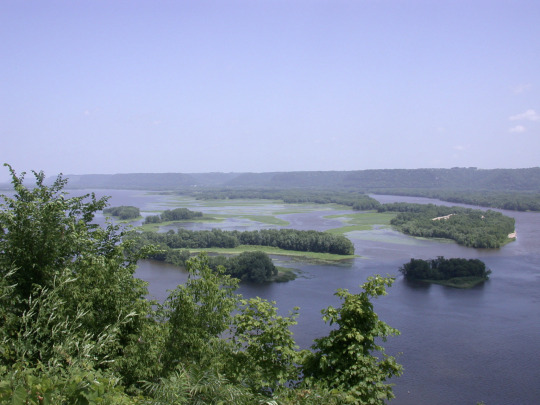
Upper Mississippi River National Wildlife and Fish Refuge.
Excerpt from this story from Madison.com:
A federal appeals panel heard arguments Wednesday in a case involving a controversial power line through southwest Wisconsin that could influence future permitting decisions on lines considered critical for a clean energy transition.
Conservation groups oppose the line, known as Cardinal-Hickory Creek, which would run 102 miles between Dubuque, Iowa, and Middleton. They argue it is unneeded and too expensive, would mar the Driftless landscape and cannot legally cross the Upper Mississippi River National Wildlife and Fish Refuge.
Utilities building the project at a cost of more than $500 million say it will improve reliability and deliver clean energy to places where it’s needed, while industry groups and academics argue the electric grid needs far more such long-distance lines to wean itself off fossil fuels.
The utilities are seeking to overturn U.S. District Court Judge William Conley’s ruling that the environmental review for the line was inadequate and that the project is incompatible with the wildlife refuge.
Conley barred the utilities from building within the 260,000-acre refuge, effectively blocking the planned river crossing, and ruled that a proposed land exchange cannot be used “to evade Congress’ mandate” for the refuge, which covers 261 river miles between Rock Island, Illinois, and Wabasha, Minnesota.
While they have not presented any alternative routes, the utilities have continued construction on either side of the river, spending at least $337.5 million, according to the most recent quarterly report to state regulators.
Opponents have asked the court to overturn Conley’s ruling that utilities can build outside of the refuge, which he called an “orchestrated train wreck.”
The appeals panel, composed of two Republican appointees and one Democratic appointee, appeared skeptical of the argument that the Fish and Wildlife Service could sidestep statutory requirements with a land swap.
#Upper Mississippi River National Wildlife and Fish Refuge#electricity transmission grid#Wisconsin#driftless area
4 notes
·
View notes
Text
Nine years since the Post Pepin Peregrination, my three speed bike tour
Pondero’s Rivendell Quickbeam (left) and my Raleigh Wayfarer on the La Crosse River Trail
Recently on the venerable “For the Love of English Three Speeds” thread on Bike Forums (over 27,000 posts over 14 years!) someone asked, “Has anyone toured on a three-speed?” I like these questions because they are a break from the navel-gazing that sometimes clogs up the thread. And despite the fact there…

View On WordPress
#driftless area#elroy-sparta trail#graveldoc#kickapoo river#la crosse#la crosse river trail#lake pepin#pondero#post pepin tour#three speed tour#wisconsin
1 note
·
View note
Text
Driftless Area, Wisconsin...
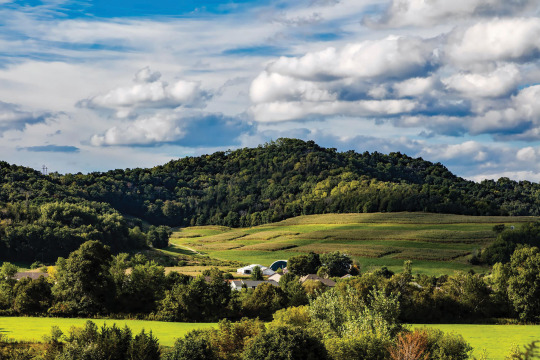
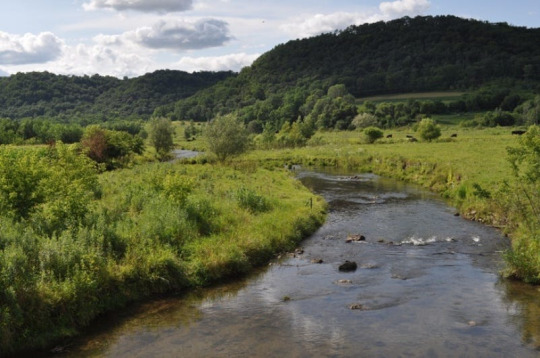




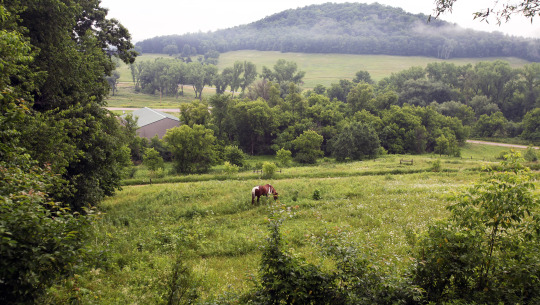

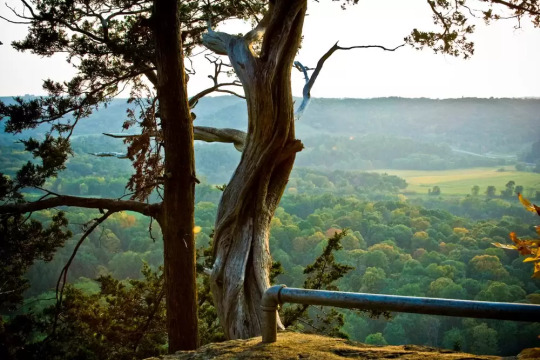
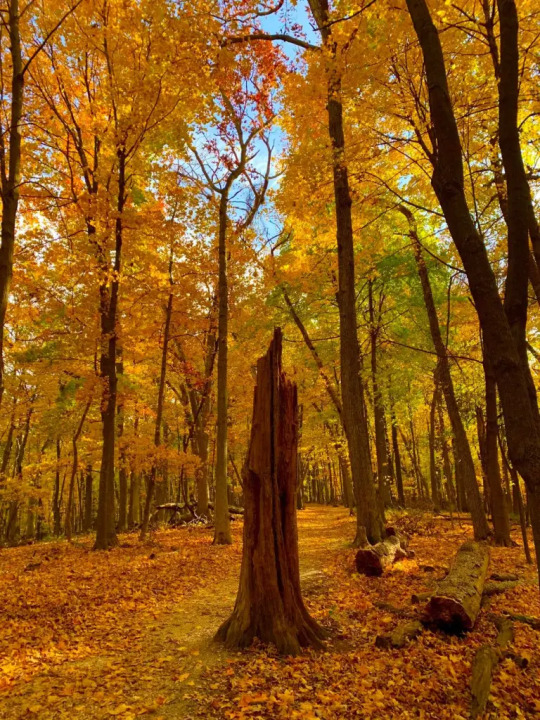
#nature#hiking#summer#autumn#wisconsin#midwest#usa#rural america#mississippi river#forest#driftless#woods#oak tree#seasons#rolling hills#spring#america
31 notes
·
View notes
Text

Pottery with collared rims, where the rim has been thickened to look as if a collar runs around it, is uncommon at Late Woodland sites in the La Crosse area. These three grit-tempered sherds from the Sand Lake Archaeological District near Onalaska have thickened rims that do not quite appear to be full collars, so the excavators called them “pseudo collared.” The pseudo collaring suggested that people in the area may have been experimenting with collaring techniques more common among groups in southeastern Wisconsin, north-central Illinois, and to a limited extent elsewhere in southwest Wisconsin.
For more information:
Boszhardt, Robert F.
2004 The Late Woodland and Middle Mississippian Component at the Iva Site (47Lc42), La Crosse County, Wisconsin, In the Driftless Area of the Upper Mississippi River Valley. The Minnesota Archaeologist 63:60–85.
Finney, Fred, and James Stoltman
1991 The Fred Edwards Site: A Case of Stirling Phase Culture Contact in Southwestern Wisconsin. In New Perspectives on Cahokia: Views from the Periphery, edited by James B. Stoltman, pp. 229–252. Monographs in World Archaeology No. 2. Prehistory Press, Madison, Wisconsin.
Kelly, John M.
2003 Delineating the Spatial and Temporal Boundaries of Late Woodland Collared Wares from Wisconsin and Illinois. Master’s thesis, University of Wisconsin- Milwaukee. https://www.academia.edu/460476/Delineating_the_spatial_and_temporal_boundaries_of_Late_Woodland_collared_wares_from_Wisconsin_and_Illinois
18 notes
·
View notes
Photo

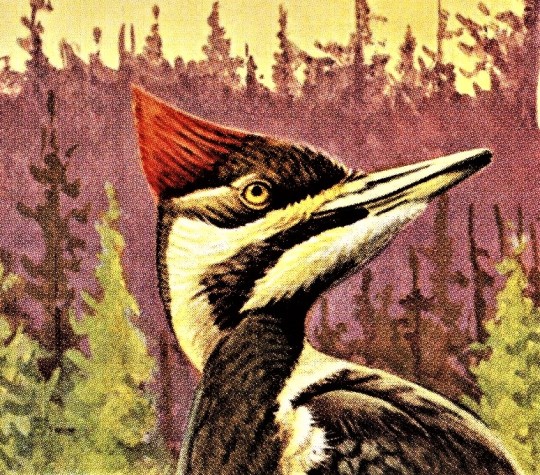

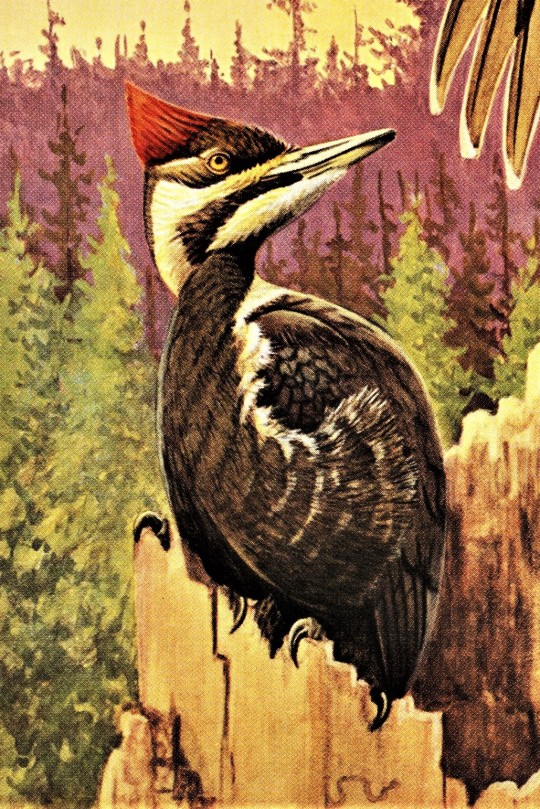

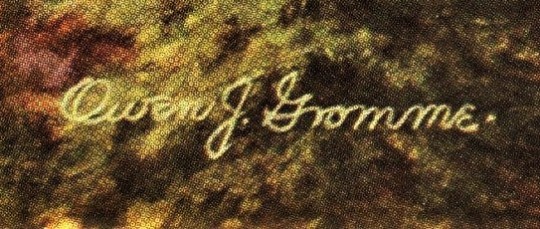
A Pileated Feathursday
If you spend an amount of time in Wisconsin’s Northwoods or Driftless Area, you are bound to spot one of these giant beauties whacking away at a tree. The Pileated Woodpecker is the largest woodpecker in North America at about 16 to 19 inches, with a wingspan that can be almost 30 inches across. While most other woodpeckers make a rapid tapping sound when at work, these brawny lumberjacks, with their bright-red Mohawks and their mighty beaks, make a slower, deeply resonant drumming that sounds like an avian construction site. While carving out nests in dead trees, Pileateds have been known to break small trees in half!
This image is from a painting by Wisconsin ornithologist, conservationist, and nature artist Owen J. Gromme (1896-1991) reproduced in his outstanding 1963 book Birds of Wisconsin published for the Milwaukee Public Museum, where Gromme was curator of birds and mammals, by the University of Wisconsin Press. Our staff get a little chuckle from this painting because it looks like one woodpecker is trying to explain something to the other who is listening in rapt attention.
Read more about Gromme and his book.
View more posts from Gromme’s Birds of Wisconsin.
View more Feathursday posts.
#Feathursday#Pileated Woodpeckers#woodpeckers#Owen J. Gromme#Birds of Wisconsin#Milwaukee Public Museum#University of Wisconsin Press#bird paintings#birds#birbs!
41 notes
·
View notes
Text
At our recent booth at the Canoecopia Paddlesports Expo we still found people who are unfamiliar with the term, Driftless Area. So a very quick explanation for those of our followers who are still unfamiliar:
The Driftless Area is a 4 state area covering corners of Wisconsin, Minnesota, Iowa, and Illinois. Never covered by ice during the last ice age, (actually there were multiple glaciers that bypassed the Driftless) the area lacks the characteristic glacial deposits known as drift. Its landscape is characterized by steep hills, forested ridges, deeply carved river valleys, and karst geology with spring-fed waterfalls and cold-water trout streams. The Greater Richland Area is firmly located within these boundaries and its geographical features are very reflective of the description above.

2 notes
·
View notes
Text

Day 28: La Crosse to Spring Green, WI
104 miles, 4,856ft ascent, 6:35
In 2010 as I was struggling to complete the bike leg of Ironman Wisconsin, I swore a solemn oath to never again ride this miserably hilly course. I had heard stories of the difficulty of this bike course but hadn’t found the time to ride it in training or do much of any hill training for that matter and so I suffered and swore my oath. In retrospect my 6:55 bike split wasn’t that bad, but it left me too shredded to run much of the marathon which followed.
Fast forward to today and me approaching today’s ride, again in the hilly Driftless Area of Wisconsin which mysteriously avoided glaciation, with trepidation. Fortunately, today we had great weather (cool temps, blue skies and no wind) and I’m now a much stronger climber. I’m still not a fan of these roller hills but it wasn’t a sufferfest like 2010 and some of today’s views were great. Wisconsin bills itself as the dairy state and we saw plenty of dairy farms among the cornfields. We also saw several groups of Amish children walking by the side of the road, presumably to school, around 9:30. I think their school day is shorter and farm chores come first. They wore traditional dress but carried modern coolers as lunch boxes and kindly returned our waves.
I’m including a pre-ride selfie in my spiffy Trek Travel kit; my post-ride, pre-shower appearance is considerable less photogenic. I was also stung again on the head while riding, this time on the left temple but I was able to take some Benedryl immediately and it hasn’t swollen so far. There’s only a very small gap between my sunglasses and helmet and most insects have bounced off (and I’ve swallowed a few) but somehow two bees have found their way to this small spot. Not much I can do unfortunately.
The group has been disciplined about focusing on the day’s ride and not looking more than a day ahead, but we are all aware that the only thing separating us from a rest day is tomorrow’s 54 mile ride to Madison.

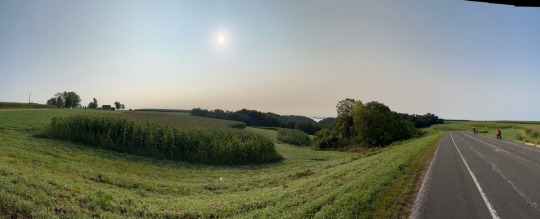
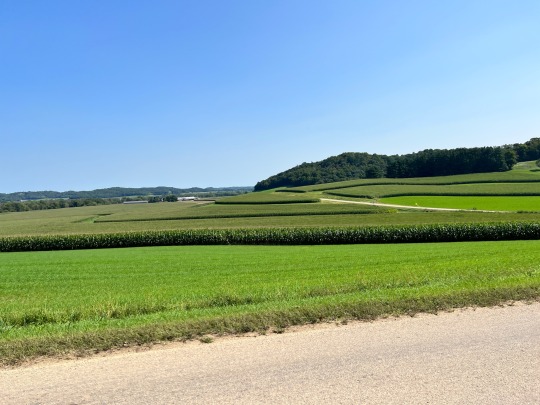
31 notes
·
View notes
Text
I Gave My Heart To The Junkman
Yesterday I sold my best friend to a stranger for $315.
This was, of course, far less than what a 2005 Kia Sedona ought to fetch, even for scrap alone. There were certainly a lot of useful parts still tucked inside ... but beyond any question of material worth, the sentimental value was incalculable. After all, I had poured so many financial and emotional resources into this long-term relationship, and steadfastly made repairs whenever the need arose, and had shown more unflagging devotion to this soccer-mom minivan than I had for some of my boyfriends, jobs, teeth, and homes. She was my first car, and like any first love, a first car carries a special significance.
I bought my Pamela in March of 2017, springing her from a dusty little shitpot in Bonner Springs, Kansas. I paid $2300 in cash for her, and easily poured ten times that amount into repairs. In just under six years, I replaced her starter, radiator, alternator, thermostat (twice), drive shafts, brakes, catalytic converters, power steering pump, rear shocks, rack and pinion, tie rods, hub and bearing, window motor, door actuator, timing belt, alternator belt, EGR valve, purge solenoid, charcoal canister, air conditioning compressor, cooling fan, valve cover gasket, tensioner and idler pulleys, exhaust Y-valve, oxygen sensors, hood struts, coils, hoses, filters, batteries, rear window, and three camshaft position sensors. We broke down in Iowa, Colorado, Washington, and Florida. We blew tires in Wisconsin, Oklahoma, Minnesota, and Georgia. I got to know the various components of my vehicle, one by one, as they fell apart.
Last week, she failed to start. In and of itself, this wasn't anything new, as she had crapped out so often in the past. But this time felt different, somehow. There was something so final about this silence. I knew, in that moment, that Pamela just didn't want to go any further. She had gone far enough.
With a heavy heart, I made arrangements with the junkman to come cart her away. I took the next few days to clean her out, retrieving all the tools, camping gear, and souvenirs I had stashed in her crates and cargo areas. The last thing I removed was the bobbing statue of Hula Girl, which I had glued to the dashboard back in Missouri. Her nose had gotten chipped in Iowa, when a sudden crosswind thwacked my camera's lens cap across her face ... but her irrepressible smile and cheerful ALOHA had accompanied me for over 99,700 miles, and I couldn't bear to leave her behind. I did, however, tear off the last few shreds of her disintegrating grass skirt, which no longer afforded her any dignity.
I sat for a long while in the driver's seat, holding the wheel that had been in my hands for thousands of hours. Its foam grip had been shredded by the stress of too many white-knuckled rides, all those times when I prayed for us to make it through blinding downpours or snowstorms or terrifying deep country two-lanes or narrow construction zones.
Sitting there, like a kid playing vroom vroom in the family car, I recounted some of our many adventures aloud. "Remember driving down the Vegas Strip? That supercell catching up with us in Valentine? That sunset in the wind farm? Heading out to the Olympic Coast? Devil's Tower? Ed Gein's place? Tinkertown? Bonneville? Waco? That refinery by Dodge City? Sunrise at Monument Valley? That one flat we got in Viroqua, and the farmer helping us change it? Dawn at Cades Cove? Those little hilltop dairy farms in The Driftless? The Badlands? The rim of Bryce Canyon? The meadow in South Park? The pueblos at Bandelier? Finding the trail at Butler Wash? The caves of Maquoketa? Picking up that hitchhiker in Dinosaur? Taking the Mountain Loop Highway up to Big Four? Morning mist on Steamboat Slough? The salmon run at Granite Falls? Taking the Alaskan Way Viaduct? Running along the Skykomish? The vultures on 312? Shiloh? Hooking up with the guys at Magnetic Springs? Going up Mt. Baker?" This went on for ages. Each memory brought to mind another, and another, experiences strung in sequence like beads on a string, a rosary of perils and deeds. After about ten minutes, my soliloquy devolved into a précis ... all I had to do was murmur "Kitty Hawk" and we returned immediately to one of the worst nights in our history, when we had to drive 700 miles through a tornado outbreak with a busted alternator and half a dozen batteries, sometimes driving blind in the rain without headlights or windshield wipers. We had so many close calls in our time together, and our survival sometimes seemed miraculous.
Finally, words failed me, and I wept. I sat there, finding myself once again broke and broken, a few weeks shy of turning forty-nine, devastated at another huge loss, crying my eyes out because my car wouldn't start.
Pamela had listened to me laugh, scream, sing. She heard my deepest secrets, my most buried fears, all the things I will never share with another living soul. She held space, literally and figuratively, as I processed early traumas, the kinds of injuries that had to be coaxed out of my soul like splinters. She kept me company as I mourned lost friendships, raged at failed opportunities, exulted over spiritual and professional victories, learned the lyrics to dozens of showtunes, and sifted through the smoldering wreckage of too many love affairs. She saw me at my very best and my very worst.
We traveled from coast to coast, crossed the Mississippi dozens of times, explored every kind of terrain in the continental US. We'd chased after tornadoes in Nebraska, dodged hailstones the size of tangerines in Oklahoma, coasted into Death Valley with squealing brakes, gunned through the Cascades on bald tires. We'd raced across salt flats and skidded out on gravel roads and slid on ice and got stuck in the mud. We climbed narrow mountain roads, corkscrewing upwards like a buggy in a Disney darkride, and were rewarded near the summits by whispering aspen groves and skies the color of lead. We followed thunderheads across hundreds of miles of cornfields, doubled back to photograph collapsing barns, got lost and found and lost again. We nearly ran out of gas on a stretch of moonlit desert, and were almost forced off the road by a madman near Mexican Hat. We saw insect swarms, murmurations of starlings, clouds rising from firs, incandescent sunsets, fogbound highways at 4:am, hazy feedlots, mine shafts, floodwaters, dust devils, wildfires. She had given me a treasury of beauty.
Pamela drove me to jobs in corporate office demolition, sanitation, construction site cleanup, disaster services, aerospace manufacturing, warehouse fulfillment, toy merchandising, and food delivery. She waited in parking lots while I went skydiving and whitewater rafting and hiking, while I ate, slept, got laid, gathered sharks' teeth, watched lions mate, and raised a circus tent. She carried me to zoos, sex clubs, cemeteries, battlefields, dormant volcanoes, dams, lighthouses, shipwrecks, museums, rodeos, waterfalls, weird roadside attractions, a nude beach, a monastery, a cassowary ranch, and the homes of countless friends. We saw Monterrey, Santa Fe, Orlando, Tukwila, Minneapolis, Fort Sumner, Little Rock, Mukilteo, Pensacola, Oso, Tulsa, Jupiter, Oakland, Bellingham, Eureka Springs, St. Louis, Mosca, Wichita, Portland, Pahrump, Ocracoke, Waco, Memphis, Sarasota, Montgomery, Estes Park, Vernal, Coeur d'Alene, Peoria, Birmingham, Lumberton, Des Moines, Topeka, Darwin, Beaverton, Bemidji, Enid, Deadwood, Hot Springs, Cullman, Austin, Ocean Springs, Chattanooga, Carlinville, Abilene, Darrington, Nashville, Moab, Pagosa Springs, McEwen, and innumerable parks, farms, rivers, and valleys. She took me to Judy Garland's birthplace in Grand Rapids and my own origin point in Ellensburg. We killed a hare near Ogallala and drove below arches made of lightning. We endured for far too long the joyless mazes of suburbia. She brought me into and back out of my homeland. She was my home at times.
Yesterday, a tow truck showed up on Reef Drive, our residence for the last four years. Pamela was marooned just behind her usual spot, along a hedge at the front of the property, in the shade of a nearby palm. A flock of scarlet ibises used to roost on her roof, and a clowder of feral kittens sometimes took shelter beneath her when it rained. There was a big rectangle where the grass had long ago given up and stopped growing. All of this was about to change.
The junkman was a friendly, toothless old chap named Thomas, and he had been doing this job for decades. His skin had been leathered by the sun, his hair bleached into straw, and save for the ball cap and tee shirt he looked exactly like a Gold Rush prospector. On his flatbed slumped a '71 Ford Bronco which had clearly seen better days. In any other circumstances, I'd be delighted to photograph such a wreck ... its windows were blown out, most of its panels were rusted, and it had an appealing patina of green mold, the sort of picturesque decay that I've spent decades documenting. But now it all seemed just too sad for words ... two old vehicles, far past their prime, being taken out to pasture. I thought of how horses used to get shot if they couldn't be ridden anymore.
Thomas indicated that my car seemed to be in pretty salvageable shape, though, and that she was likely to undergo a refurb rather than being scrapped altogether. This gave me a ray of hope that perhaps Pamela might yet play a special role in somebody else's life, and that just because our road had come to an end did not mean she herself was destined for oblivion.
I told him a little about the vehicle he was buying, how famous she was, how there were loyal followers around the world who had been cheering her on for the past several years. "This isn't just a car," I said. "Pamela's been through a lot. She's special." I told him about the memoir I published last year, about how we had traveled together over the whole country and seen the most incredible sights. He nodded and smiled and feigned interest, as he pointed out the numerous papers for me to sign off on. Then he handed me a check, which seemed pitifully small in my hands, and he set about hooking my poor old hooptie onto the tow rig.
I'd witnessed this ritual so many times ... the slow humiliating whine as my baby got hoisted into position, the rattle of chains around her undercarriage, the sinking helpless feeling as the tow truck lurched forward. I had already seen her get pulled away when her radiator blew up in Boulder, when her starter crapped out in Bothell, when her fuel lines got clogged in St. Augustine. But this time was different. This time there would be no joyful reunion at the shop. I stood across the street, and the reality of the situation hit me full force. Pamela, the car who had transformed my entire life, who had freed me from a desperately unhappy stint in Kansas City, who had framed most of America in her windshield, was leaving me forever. In a few minutes, she would disappear, and that would be that.
It's different in the movies, when a love story wraps up. Your heroes ride off into the sunset together, and the music swells, and THE END appears in big fancy letters over the clouds. And as the credits roll and you stand and brush popcorn from your lap you enjoy a tidy sense of closure. There is a clear sense of something having been finished, of a narrative having reached its rightful conclusion. My last few minutes with this minivan, on the other hand, felt weirdly anticlimactic and unsatisfying. I caught a few seconds of video on my phone as the tow truck began its journey. Then I just stood in the middle of the road with my arms hanging limply at my sides and watched as the most meaningful possession of my life rolled away, growing smaller and smaller until she reached the end of the block. And then the tow truck rounded the corner, and left my view altogether, and my Pamela was finally gone.
"Goodbye, old girl," I said, wiping my eyes. "Goodbye." Then I went back to my studio, returned to my easel, picked up a brush, and began the search for a new frontier.
2 notes
·
View notes
Text

One of first mushrooms I found that started me down this journey were these golden oyster mushrooms, Pleurotus citrinopileatus, I spotted on a trip to the Driftless area in Wisconsin.
I knew less than the basics when it came to mushrooms, but I had heard of oyster mushrooms. I had no idea that they could be bright yellow (much less pink!) I looked up all the "look-alikes" I could find online, namely the dreaded jack-o'-lantern, Omphalotus illudens. I had to be absolutely thoroughly convinced that those mushrooms were yellow and could not in some way be interpreted as orange! I made a spore print and agonized over wether the spores were more lilac-gray or brown-gray. Finally, took a fist-full of them into the kitchen with me and dared to eat them. By some miracle, it seems I am still alive! Ultimately, golden oyster mushrooms are really a kind of mushroom that you know when you see them (or smell them!)
I'll be making a little identification and fun-facts post for my own reference a bit later.
2 notes
·
View notes
Text
I decided I like exploring unfamiliar roads so I bought a road atlas for Wisconsin. The funnest part so far is seeing how straight and grid-like roads become the moment you get away from the Driftless Area.
#is that how roads normally work? you don't have to go up and around and down and widdershins between ridges and flood plains?#i used to curse my sense of direction because of how easily i could get turned around. turns out that may not be my fault#found two new ways to get from work to my parents house so far. can't wait to check 'em out
1 note
·
View note
Text


1 note
·
View note
Text
The Best Leaf Peeping in the USA
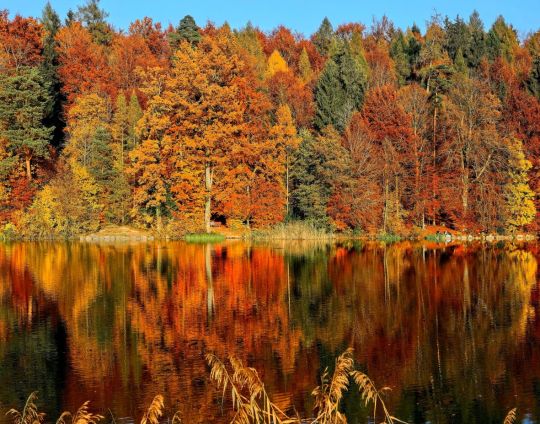
It is getting that time of year soon. The weather will turn colder, and the leaves will start to change. People will start leaf peeping all around the country and coming from Pennsylvania, this was always my favorite time of year.
Leaf peeping is a popular pastime for many Americans, as it allows them to take in the beauty of the changing seasons. Every year, millions of people flock to the best locations for leaf peeping in the USA to witness the vibrant colors of fall foliage. From the East Coast to the West Coast, there are plenty of stunning spots to take in the beauty of the changing leaves. This guide will provide an overview of the best locations for leaf peeping in the USA, as well as tips for making the most of your leaf peeping experience.
Best Locations for Leaf Peeping in the USA
New England
New England is one of the most popular destinations for leaf peeping in the USA. The region is known for its stunning fall foliage, with vibrant reds, oranges, and yellows blanketing the landscape. The best time to visit New England for leaf peeping is typically mid-September to mid-October. Popular spots for leaf peeping in New England include the White Mountains of New Hampshire, the Berkshires of Massachusetts, and the Green Mountains of Vermont.
The Great Smoky Mountains
The Great Smoky Mountains are another popular destination for leaf peeping in the USA. The park is home to some of the most stunning fall foliage in the country, with vibrant reds, oranges, and yellows blanketing the landscape. The best time to visit the Great Smoky Mountains for leaf peeping is typically mid-October to early November. Popular spots for leaf peeping in the Great Smoky Mountains include Clingmans Dome, Newfound Gap, and Cades Cove.

The Pacific Northwest
The Pacific Northwest is another great destination for leaf peeping in the USA. The region is known for its stunning fall foliage, with vibrant reds, oranges, and yellows blanketing the landscape. The best time to visit the Pacific Northwest for leaf peeping is typically mid-September to mid-October. Popular spots for leaf peeping in the Pacific Northwest include Mount Rainier National Park, Olympic National Park, and Mount St. Helens National Volcanic Monument.
The Midwest
The Midwest is another great destination for leaf peeping in the USA. The region is known for its stunning fall foliage, with vibrant reds, oranges, and yellows blanketing the landscape. The best time to visit the Midwest for leaf peeping is typically mid-October to early November. Popular spots for leaf peeping in the Midwest include the Upper Peninsula of Michigan, the North Shore of Lake Superior, and the Driftless Area of Wisconsin.
The Southwest
The Southwest is another great destination for leaf peeping in the USA. The region is known for its stunning fall foliage, with vibrant reds, oranges, and yellows blanketing the landscape. The best time to visit the Southwest for leaf peeping is typically mid-October to early November. Popular spots for leaf peeping in the Southwest include the Grand Canyon, Zion National Park, and Monument Valley.
Our Final Word
Leaf peeping is a popular pastime for many Americans, as it allows them to take in the beauty of the changing seasons. From the East Coast to the West Coast, there are plenty of stunning spots to take in the beauty of the changing leaves. This guide has provided an overview of the best locations for leaf peeping in the USA, as well as tips for making the most of your leaf peeping experience. So grab your camera and head out to one of these stunning spots to witness the vibrant colors of fall foliage.
Related Posts
Read the full article
1 note
·
View note
Text
Day 22, Saturday, June 17: Rochester to Eyota and Lewiston and Winona, Minnesota to LaCrosse and Kendall and Portage and Fox Lake and Horicon and Milwaukee, Wisconsin. 480 km.
Rochester is a city of 121,465 in southern Minnesota. It's the birthplace of renowned healthcare organization, the Mayo Clinic.
As I pull out of Rochester, I have planned my route. It will be a day of county roads (which in Wisconsin are named after letters, not numbers), the Great River Road (which traces the Mississippi River), and fascinating typographies.
The initial ride to Lewston starts out typical Minnesota flat fields of corn, but as I get closer to Winona and the Mississippi River, the typography changes. There are 20 named mountains in Winona county, including Sugar Loaf Mountain, which towers 500 feet over the Mississippi River. It makes for an unexpected cool, green, treed, and twisty ride. I slalom into Winona and pick up the Great River Road, which I take to La Crosse, Wisconsin, where I cross the Mississippi River. All the way down, I have Minnesota on my right and Wisconsin on my left.
In La Crosse, I run into another geographic anomaly - coulees. The name coulee comes from an old French word meaning ravine. The name accurately describes the area, as it is forested with many deep gulches and ravines formed by water erosion.
In fact, this whole area, as far as Kendall, is an anomaly called the Driftless region. When the glaciers plowed out the great plains, they missed this area, so it is, in fact, quite hilly and forested and makes for some scenic, undulating and spirited riding after so many days on the flat, endless plains.
Once I reach Kendall, I search out Flippys Bar and Grill for some bacon and eggs. Seeing as it's a bar, I get a Baileys for my coffee. Pulling out of Kendall, it is clear thatcI have reached the end of the Driftless Region as once again, I am riding through flat farm country, trains, and wind turbines.
When I reach Horicom, it is clear that John Deere is an important presecence. The John Deere Company runs a serious manufacturing operation here and is a major provider of jobs in this city of 3,800.
By prairie standards, it's been a day full of twisting, winding, climbing, and descending by the late afternoon when I turn south and start my way into Milwaukee, I am exhilarated but tired and ready to call it a day.











0 notes
Link
🚣♀️ Looking for an adventure in the great outdoors? Kayaking the Kickapoo River in Wisconsin might be just what you need. This scenic river winds through the Driftless Area, offering a unique experience for paddlers of all skill levels. 🏞️ The Kickapoo River is known for its crystal-clear waters, towering bluffs, and abundant wildlife. As you paddle down the river, you'll be surrounded by lush forests, rocky outcroppings, and stunning vistas. It's a true escape from the hustle and bustle of everyday life. 🌳 Whether you're looking for a peaceful float or an adrenaline-pumping ride through rapids, the Kickapoo River has something for everyone. With several access points and rental options available, it's easy to plan a day trip or a multi-day adventure. So grab your paddle and get ready to explore one of Wisconsin's hidden gems!1. Exploring the Scenic Beauty of Kayaking Kickapoo RiverKayaking the Kickapoo River is a breathtaking experience that allows you to explore the scenic beauty of the area. You'll paddle through lush forests, towering bluffs, and tranquil waters that are home to a variety of wildlife. 🌳 Lush forests 🏔️ Towering bluffs 🐟 Abundant wildlife The river is perfect for both beginners and experienced kayakers, with calm stretches and exciting rapids to navigate. Be sure to bring a camera to capture the stunning views and memories of your adventure. 📷 Bring a camera 🌅 Capture stunning views 🤳 Create lasting memories Don't forget to pack sunscreen, water, and snacks for your journey down the river. Plan your trip in advance and check the weather forecast to ensure a safe and enjoyable experience. 🧴 Pack sunscreen 🚰 Bring water 🍎 Pack snacks 🌦️ Check the weather 2. Preparing for a Safe and Enjoyable Kayaking Trip on Kickapoo RiverBefore embarking on a kayaking trip on Kickapoo River, it is important to take some safety measures to ensure a fun and secure experience. Check the weather forecast and water conditions. Wear a personal flotation device (PFD) at all times. Bring a whistle, a waterproof map, and a first aid kit. It is also crucial to pack appropriate gear and supplies for the trip. Wear quick-drying clothes and water shoes. Bring sunscreen, insect repellent, and a hat. Carry enough water and snacks for the duration of the trip. Before launching, make sure to inform someone of your planned route and expected return time. Stay alert and aware of your surroundings. Avoid alcohol and drugs before and during the trip. Respect wildlife and leave no trace behind. By following these guidelines, you can ensure a safe and enjoyable kayaking experience on Kickapoo River. 🚣♀️🌊3. Navigating the Rapids and Calm Waters of Kickapoo RiverWhen navigating the Kickapoo River, it's essential to understand the different types of waters you'll encounter. Rapids can be challenging, but calm waters can also present their own set of obstacles. 🌊 Rapids: These sections of the river are characterized by fast-moving water and rocky terrain. Stay alert and steer clear of obstacles. 🚣 Calm Waters: These areas may seem easy to navigate, but be aware of hidden rocks and shallow spots. When approaching rapids, it's crucial to have the proper equipment and safety gear, including a life jacket and helmet. Scout the area beforehand and plan your route accordingly. 🛡️ Safety First: Always prioritize safety when navigating the river. If in doubt, portage around the rapids. 👥 Teamwork: Work with your fellow paddlers to navigate rapids and stay on course. When navigating calm waters, keep an eye out for submerged obstacles and shallow areas. Use your paddle to steer clear of potential hazards and maintain a steady course. 🧭 Navigation: Use landmarks and maps to stay on course and avoid getting lost. 👀 Keep a Lookout: Stay vigilant and keep an eye out for potential hazards. By understanding the different types of waters you'll encounter on the Kickapoo River and taking the necessary precautions, you can safely navigate this beautiful waterway.4. Discovering the Diverse Wildlife Along the Banks of Kickapoo RiverExploring the Kickapoo River is a great way to discover the diverse wildlife that inhabits its banks. From birds to mammals, there is a lot to see. Keep an eye out for bald eagles soaring overhead, as they are a common sight along the river. The river is also home to a variety of fish, including smallmouth bass, walleye, and northern pike. If you're lucky, you may even spot a river otter or muskrat swimming in the water. As you hike along the riverbank, you may come across a variety of mammals, such as white-tailed deer and raccoons. The Kickapoo River is also a popular spot for birdwatching, with over 100 species of birds calling the area home. You may see great blue herons, red-tailed hawks, and even wild turkeys during your visit. Don't forget to bring your binoculars to get a closer look at these beautiful creatures. Take a break from your hike and explore the river's wetlands, where you can find a variety of amphibians and reptiles. Keep an eye out for painted turtles basking in the sun or green frogs leaping into the water. You may even see a northern water snake slithering through the reeds. Remember to respect these animals and keep a safe distance. Overall, the Kickapoo River is a haven for wildlife enthusiasts. With so much to see, it's no wonder this area is a popular destination for nature lovers.5. Choosing the Right Kayak and Gear for Your Kickapoo River AdventureBefore embarking on your Kickapoo River adventure, it's essential to choose the right kayak and gear. Here are some tips: Choose a kayak suitable for the river's water conditions and your skill level. Consider the kayak's weight, length, and width for comfort and stability. Invest in a good quality paddle to avoid fatigue and improve maneuverability. When it comes to gear, here are some must-haves: Life jackets or personal flotation devices (PFDs) are crucial for safety. Waterproof bags or containers to keep your belongings dry. Sunscreen, sunglasses, and a hat to protect yourself from the sun. Don't forget to dress appropriately for the weather and water conditions: Wear quick-drying clothes and avoid cotton, which retains moisture. Wear water shoes or sandals with straps to avoid losing them in the river. Bring a rain jacket or windbreaker in case of unexpected weather changes. Finally, consider renting or buying a kayak and gear from a reputable outfitter: They can provide expert advice on the best equipment for your needs. They can ensure that the gear is in good condition and meets safety standards. They can offer shuttle services and other amenities to enhance your experience. With the right kayak and gear, you can enjoy a safe and comfortable adventure on the Kickapoo River 🚣♀️🌊6. Understanding the History and Culture of the Kickapoo River ValleyDiscover the rich history and culture of the Kickapoo River Valley, home to the Kickapoo tribe for centuries. Learn about the tribe's way of life, including their agricultural practices and spiritual beliefs. Explore the area's historic sites, such as the Kickapoo Valley Reserve and the Kickapoo Indian Caverns. Experience the valley's unique culture through local festivals and events, such as the Driftless Area Art Festival. Visit the Kickapoo Valley Heritage Center to learn more about the area's history and view exhibits on the Kickapoo tribe and local settlers. Discover the impact of the logging and mining industries on the valley's landscape and economy. View artifacts and photographs from the area's past, including tools used by early settlers and Native American artifacts. Learn about the efforts to preserve the valley's natural beauty and cultural heritage through conservation and education programs. Take a guided tour of the valley with a local expert to gain a deeper understanding of its history and culture. Visit historic sites and landmarks, including the Kickapoo Valley Reserve Visitor Center and the Kickapoo Valley Ranch. Learn about the valley's geology and ecology, including its unique karst topography and diverse wildlife. Experience the valley's natural beauty firsthand through hiking, fishing, and other outdoor activities. Immerse yourself in the Kickapoo River Valley's rich history and culture for a truly unforgettable experience.7. Planning Your Next Kayaking Excursion on Kickapoo RiverBefore you hit the Kickapoo River, plan your next kayaking excursion with these tips: Check the weather forecast and water levels Choose the appropriate kayak and gear Plan your route and estimated time Bring enough food, water, and sunscreen Consider hiring a guide or joining a group for safety and a more enjoyable experience. Don't forget to respect the environment and wildlife by packing out your trash and avoiding disturbing the natural habitat. Some popular spots for kayaking on the Kickapoo River include Wildcat Landing, Rockton Boat Landing, and Landing 14. Each offers unique scenery and challenges for kayakers of all levels. Make sure to take breaks and enjoy the views along the way. Capture the memories with photos or a waterproof camera. 📸 Finally, always prioritize safety. Wear a life jacket and avoid kayaking alone. Stay aware of your surroundings and be prepared for any unexpected situations. Happy kayaking! 🚣 In conclusion, kayaking the Kickapoo River is a must-do experience for any outdoor enthusiast. The river offers a unique opportunity to explore the beauty of Wisconsin's Driftless Area, with its stunning rock formations and abundant wildlife. 🚣♀️🌿🐿️ Whether you're a seasoned kayaker or a beginner, the Kickapoo River has something to offer for everyone. With its gentle currents and easy rapids, it's a great place to hone your skills or simply relax and enjoy the scenery. 🌄🌊🌳 So if you're looking for a fun and memorable adventure, grab your kayak and head to the Kickapoo River. You won't be disappointed! 🌞🛶👍 https://xtremesports.net/kayaking-kickapoo-river/?_unique_id=647c2f5bdae62
#Uncategorised#Kayakingadventure#KickapooRiverexploration#Natureandwildlifeobservation#Outdoorwatersports#Scenicriverroute#aiomatic_0
0 notes
Text

Even fragments of pottery can reveal cultural connections across space and time. These grit-tempered rim sherds were unearthed during excavations in the Sand Lake area near Onalaska, Wisconsin, in 2008. They all belong to the same Terminal Late Woodland Maples Mills vessel, dated to around AD 1000. This ceramic type designation was based on the vessel’s cord-roughened surface with complex cord impressions and its castellated rim top, with fairly regular grooves or spaces that resemble a castle wall. The sherds represent the first known Maples Mills castellated vessel found in the La Crosse area. The Maples Mills type is tied to central Illinois around AD 800 (Esarey 2000), but examples of the type also come from northeast Iowa at a site dating from around AD 1000 to 1050. Similar pottery with Middle Mississippian connections has been found in far southwest Wisconsin in contexts dating to AD 1100–1150 (Stoltman and Christensen 2000). The Maples Mills pottery fits with evidence of Middle Mississippian contacts, such as ceramics and feasting activity, elsewhere in the Sand Lake area as well.
Esary, Duane
2000 The Late Woodland Maples Mills and Mossville Phase Sequence in the Central Illinois River Valley. In Late Woodland Societies: Tradition and Transformation across the Midcontinent, edited by Thomas E. Emerson, Dale L. McElrath, and Andrew C. Fortier, pp. 387–410. University of Nebraska Press, Lincoln.
Stoltman, James and Ralph Christensen
2000 The Late Woodland Stage in the Driftless Area of the Upper Mississippi Valley. In Late Woodland Societies: Tradition and Transformation Across the Midcontinent, edited by Thomas Emerson, Dale McElrath, and Andrew Fortier, pp. 494–524. University of Nebraska Press, Lincoln.
#archaeology#archeology#woodland pottery#woodland ceramics#Maples Mills Woodland pottery#Maples Mills Woodland ceramics
6 notes
·
View notes